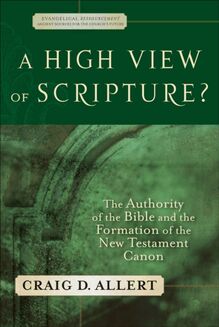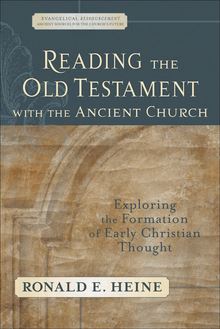-
 Univers
Univers
-
 Ebooks
Ebooks
-
 Livres audio
Livres audio
-
 Presse
Presse
-
 Podcasts
Podcasts
-
 BD
BD
-
 Documents
Documents
-
- Cours
- Révisions
- Ressources pédagogiques
- Sciences de l’éducation
- Manuels scolaires
- Langues
- Travaux de classe
- Annales de BEP
- Etudes supérieures
- Maternelle et primaire
- Fiches de lecture
- Orientation scolaire
- Méthodologie
- Corrigés de devoir
- Annales d’examens et concours
- Annales du bac
- Annales du brevet
- Rapports de stage
La lecture à portée de main
Vous pourrez modifier la taille du texte de cet ouvrage
Découvre YouScribe en t'inscrivant gratuitement
Je m'inscrisRetrieving History (Evangelical Ressourcement) , livre ebook
Découvre YouScribe en t'inscrivant gratuitement
Je m'inscrisEn savoir plus
Vous pourrez modifier la taille du texte de cet ouvrage
En savoir plus

Description
Sujets
Informations
| Publié par | Baker Publishing Group |
| Date de parution | 18 avril 2017 |
| Nombre de lectures | 0 |
| EAN13 | 9781493406678 |
| Langue | English |
| Poids de l'ouvrage | 3 Mo |
Informations légales : prix de location à la page 0,0720€. Cette information est donnée uniquement à titre indicatif conformément à la législation en vigueur.
Extrait
Cover
Series Page
D. H. Williams, series editor
The Evangelical Ressourcement series is designed to address the ways in which Christians may draw upon the thought and life of the early church to respond to the challenges facing today’s church.
Title Page
Copyright Page
© 2017 by Stefana Dan Laing
Published by Baker Academic
a division of Baker Publishing Group
P.O. Box 6287, Grand Rapids, MI 49516-6287
www.bakeracademic.com
Ebook edition created 2017
All rights reserved. No part of this publication may be reproduced, stored in a retrieval system, or transmitted in any form or by any means—for example, electronic, photocopy, recording—without the prior written permission of the publisher. The only exception is brief quotations in printed reviews.
Library of Congress Cataloging-in-Publication Data is on file at the Library of Congress, Washington, DC.
ISBN 978-1-4934-0667-8
Unless otherwise indicated, Scripture quotations are from The Holy Bible, English Standard Version® (ESV®), copyright © 2001 by Crossway, a publishing ministry of Good News Publishers. Used by permission. All rights reserved. ESV Text Edition: 2011
Scripture quotations labeled HCSB are from the Holman Christian Standard Bible®, copyright © 1999, 2000, 2002, 2003, 2009 by Holman Bible Publishers. Used by permission. Holman Christian Standard Bible®, Holman CSB®, and HCSB® are federally registered trademarks of Holman Bible Publishers.
Dedication
To Fulga Pascu Dan and Emanuel Titus Dan † , fellow pilgrims and citizens of the Heavenly City, my first and best teachers, who sped me along the path of historical studies and always urged me to use my discipline in the service of the church.
Contents
Cover i
Series Page ii
Title Page iii
Copyright Page iv
Dedication v
Series Preface ix
Preface xi
Abbreviations xix
Map xxi
Time Line xxiii
1. Invitation to the Past 1
2. Ancient Historical Writing and the Rise of Historical Literary Forms 19
3. History as Apologetic: Harnessing a Usable Past 47
4. Martyrology: Remembering the Martyrs’ Noble Example 79
5. Hagiography: Martyrdom as Discipleship in Early Christian Biographies 113
6. Ecclesiastical History: The Story of the Church 163
7. Conclusions and Trajectories 195
Bibliography 201
Index 210
Back Cover 225
Series Preface
T he Evangelical Ressourcement : Ancient Sources for the Church’s Future series is designed to address the ways in which Christians may draw upon the thought and life of the early church to respond to the challenges facing today’s church. The term ressourcement was coined by French Roman Catholic writers in the mid-twentieth century as descriptive of theological renewal that declared Christians must return to the sources ( ad fontes ) of the ancient Christian tradition. The operative assumption was that the church is apostolic (formed and directed by the Old and New Testaments) and also patristic (indebted to the intellectual and spiritual legacy of the fathers of the church). Much of our understanding of the Bible and theological orthodoxy, directly or indirectly, has come through the interpretive portals of the early church, which is an integral part of the Protestant identity, no less than it is for Roman Catholicism or Eastern Orthodoxy.
Using the methods and tools of patristic scholarship, each series volume is devoted to a particular theme related to biblical and theological interpretation. Similar to the past practices of ressourcement , this series is not seeking to appropriate the contributions of the early church in an idealized sense but through a critical utilization of the fathers as the church’s primary witnesses and architects for faithfully explicating the Christian faith. Series readers will see how (1) both Scripture and the early tradition were necessary for the process of orthodox teaching, (2) there is a reciprocal relationship between theology and the life of the church, (3) the liberty of the Spirit in a believer’s life must be balanced with the continuity of the church in history, and (4) the Protestant Reformation must be integrated within the larger and older picture of what it means to be catholic. In effect, it is the intention of this series to reveal how historical Protestantism was inspired and shaped by the patristic church.
As Protestantism confronts the postdenominational and, in many ways, post-Christian world of the twenty-first century, it is vital that its future identity not be constructed apart from the fullness of its historical foundations. Seminal to these foundations is the inheritance of the early church, “that true, genuine Christianity, directing us to the strongest evidence of the Christian doctrine” (John Wesley). Therein Christians will find not a loss of their distinctiveness as Protestants but, as the sixteenth-century Reformers found, the resources necessary for presenting a uniquely Christian vision of the world and its message of redemption.
Preface
T he year 2014 marked the twenty-fifth anniversary of the government repression of protesters in China’s Tiananmen Square. It also marked twenty-five years since the fall of the Berlin Wall and the Iron Curtain in Eastern Europe. As a commemoration, journalist and NPR China correspondent Louisa Lim released a volume in 2015 titled The People’ s Republic of Amnesia: Tiananmen Revisited . 1 For the Chinese people, the events of June 4, 1989, are a dim memory if a memory at all, since the government has chosen to suppress and expunge that event from the collective memory. No public commemorations of the event are allowed at the square, which has been repaved to cover traces of blood. Security is tight on anniversary days to prevent any public demonstrations. Government censorship of the internet ensures that information regarding the events remains scant and unavailable. Since a memory of the power of collective solidarity has been erased from the media and history books, millions of Chinese young people are growing up without any knowledge of the events of June 4, 1989. This has led to politically apathetic young people and a content but vigilant Communist Party propagating an “amnesiac drug of shallow nationalism.” 2
By contrast, Romania, which experienced the bloodiest revolution of all the Communist bloc countries, has sought to keep alive the memories of the 1989 revolution. In and around the central square in my father’s hometown of Cluj-Napoca, travelers can see inscriptions and monuments commemorating the unarmed civilians who were brutally slain by government forces. An especially moving sculpture of seven huge asymmetrical bronze columns stands in one corner of Union Plaza (Pia ț a Unirii). It is called Stâlpii Împuşcaţi, literally translated as “Shot Pillars.” The sculpture represents those who were killed in the square on December 21, 1989. In addition to this public memorial, in 2014 on the twenty-fifth anniversary, a volume of photographs documenting the events was released with the same title as the sculpture, commemorating “A quarter century with the Martyrs of the December 1989 Revolution in Cluj-Napoca.” 3 My uncle Nelu explained to me that the sculpture represents those slain as present rather than absent. The dead are not gone, he explained; they are still present among us. For those who remain, the “martyrs’” example of courage is publicly visible, inspiring viewers to boldness in the face of repression, and confronting the socially and politically apathetic to action and hope. In fact, several groups present at the memorial displayed a banner that read, “History will not forgive us if we forget it.” The eventual overthrow of the Communist Party and dismantling of its structures were a tribute to those who had risked their lives in the square that winter day. Despite its admission into the European Union in 2007, Romania has not fully recovered politically, socially, or economically. Nonetheless the people have a collective narrative of overcoming, examples of courage and sacrifice, and memories to remind them that a tyrannical atheistic regime cannot keep the faithful subjugated forever. It is God who raises up and topples regimes.
Not surprisingly, China’s reaction to the Romanian revolution was to watch in dismay as the people prevailed while chanting Christian slogans on their knees and out in the open, after four decades of atheistic dominance. “God exists!” they shouted. The Chinese continue to be perturbed, no doubt, by pro-democratic demonstrators around the world (even in neighboring Hong Kong and Taiwan) who will not allow the suppression of China’s collective memory. They understand that the loss of collective memory is closely followed by loss of identity as a people striving for freedom and democracy.
The Importance of This Material
One more alarming example of the attempt to destroy collective memory is evident in the recent operations of ISIS. In the summer of 2014, ISIS devastated ancient Christian communities in Mosul, Iraq (ancient Nineveh), intentionally destroying Judeo-Christian religious archaeological sites and churches, as well as important archaeological ruins in the city of Palmyra in Syria the following year. These radicals are attempting to wipe out history, obliterating any indication of the presence of Christianity in the Middle East (admittedly their fanatical destructiveness is not limited to Jewish and Christian sites). They also understand that memory—that is, a sense of one’s antiquity and received heritage—and identity are a powerful combination for the continued existence and sustenance of nations and religions.
The chief importance of the ancient texts examined in this work is that they demonstrate that the past affects the present and future, and they show how that process unfolded in a particular period within the church’s history. Familiarity—and even more, direct engagement—with the sources both reveals and forms an identity: the encounter can elucidate for Christians our herita
-
 Univers
Univers
-
 Ebooks
Ebooks
-
 Livres audio
Livres audio
-
 Presse
Presse
-
 Podcasts
Podcasts
-
 BD
BD
-
 Documents
Documents
-
Jeunesse
-
Littérature
-
Ressources professionnelles
-
Santé et bien-être
-
Savoirs
-
Education
-
Loisirs et hobbies
-
Art, musique et cinéma
-
Actualité et débat de société
-
Jeunesse
-
Littérature
-
Ressources professionnelles
-
Santé et bien-être
-
Savoirs
-
Education
-
Loisirs et hobbies
-
Art, musique et cinéma
-
Actualité et débat de société
-
Actualités
-
Lifestyle
-
Presse jeunesse
-
Presse professionnelle
-
Pratique
-
Presse sportive
-
Presse internationale
-
Culture & Médias
-
Action et Aventures
-
Science-fiction et Fantasy
-
Société
-
Jeunesse
-
Littérature
-
Ressources professionnelles
-
Santé et bien-être
-
Savoirs
-
Education
-
Loisirs et hobbies
-
Art, musique et cinéma
-
Actualité et débat de société
- Cours
- Révisions
- Ressources pédagogiques
- Sciences de l’éducation
- Manuels scolaires
- Langues
- Travaux de classe
- Annales de BEP
- Etudes supérieures
- Maternelle et primaire
- Fiches de lecture
- Orientation scolaire
- Méthodologie
- Corrigés de devoir
- Annales d’examens et concours
- Annales du bac
- Annales du brevet
- Rapports de stage









